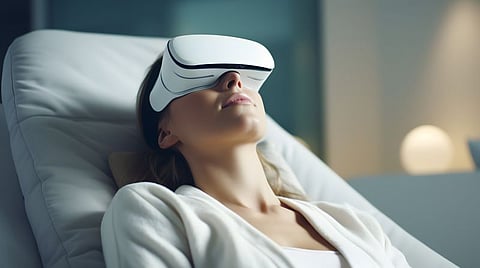TUESDAY, Feb. 6, 2024 (HealthDay News) -- Mixed reality (MR) is feasible and safe and may reduce anxiety among blood donors, according to a study published online Jan. 29 in Transfusion.
Suchitra Pandey, M.D., from Stanford University in Palo Alto, California, and colleagues evaluated MR's usability, impact on anxiety, and safety in the blood donation setting. The analysis included questionnaire responses from 282 blood donors who used MR.
The researchers found that 84 percent wanted to try MR because it seemed fun/different/cool/interesting. Most staff (69 percent) and donors (68 percent) found MR easy to use. Baseline subjective anxiety was reported by 50.3 percent of participants, more often in women, first-time donors, and donors younger than 20 years. Baseline anxiety was reduced by MR in 68.4 percent of donors. Just over half (54 percent) of donors with baseline anxiety would use MR again, with the highest future interest seen among young donors. Adverse donor reactions while using MR were mild and included prefaint reactions and hematomas.
"This study demonstrates the potential of MR in reducing donor anxiety, its feasibility during blood donation, and its safety in blood donors," the authors write. "MR is an innovative technology that holds promise to increase donor engagement, satisfaction, and retention."
Two authors reported being employed at Abbott Laboratories, one of the study funders.
Abstract/Full Text


